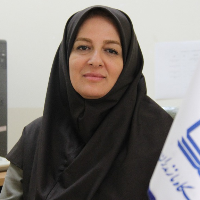Analyzing the visual themes of Falnama paintings in Safavid era based on the use in prediction (Case study: Persian version of the Topkapi Saray museum Falnama)
Falnama of the Safavid era, includes multiple images with a variety of themes and the main purpose of this study which focuses on the prediction and concludes with a depiction of the fortune telling. Indeed, this research seeks to identify the diversity of the themes in Falnama paintings in Safavid era. The Topkapi Saray museum Falnama, with its fifty-nine paintings, the bound Persian Falnama (TSM H.1702), now housed in the Topkapi Palace Library, is the most extensively illustrated copy. Attributable to the last quarter of the sixteenth century, the manuscript's written and painted folios have been carefully integrated into a unified ensemble. The volume must have entered the Ottoman royal collection sometime belore the reign of Ahmed ii (reigned 1703-30), whose seal appears on the flyleaf and offers a terminus ante quem for its acquisition. Its maroon binding dates from the reign of Sultan Abdulhamid II (1876-1909), at which time some of the folios may have been re-margine. Similar to other Falnamas, the manuscript has an image on the right (verso) and a related text folio on the left (recto), but it is also the only monumental copy to Integrate text and Image on the same page. Each illustration is framed by a pair of couplets in Nasta'liq script that introduces the subject and the general nature of the prognostication. In addition, Koranic verses (aya), copied in gold, blue, or red Muhaqqaq script, appear at the top of each illustrated folio. In many instances, the verses refer directly to the subject of the image; in others, only fragments are used and the connection between the illustration and the sacred text is more opaque. Such a highly unorthodox scheme simultaneously underscores the source of the images and lends them indisputable authority. No other illustrated religious, historical, or literary manuscript attempts to relate its paintings so explicitly to the Koran, which further adds to the exceptional nature of this particular volume. To this end, the question raised here is over the relationship among the concepts behind Falnamas’ paintings with prediction and fortune telling. Being qualitative in nature, the present study adopts a descriptive approach to content analysis with the findings demonstrating that the popularity paintings in Topkapi Saray museum Falnama, in three major religious, literary and astronomical sections, the religious themes have the highest number of paintings of this manuscript. The themes of this version of the Falnama have been used through the narratives to determine good and bad affairs and the predictability of prediction. Also tried by imposing the concept of resorting to the religious themes of the images give legitimacy to prophesy against the Religious prohibition.
- حق عضویت دریافتی صرف حمایت از نشریات عضو و نگهداری، تکمیل و توسعه مگیران میشود.
- پرداخت حق اشتراک و دانلود مقالات اجازه بازنشر آن در سایر رسانههای چاپی و دیجیتال را به کاربر نمیدهد.




